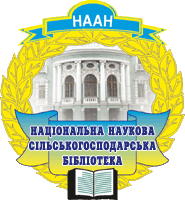|
The large economies of Ukraine, in that in quality of model of optimization of land-tenure effective organic technologies were used on the basis of optimization of structure of sowing areas and crop rotations, are analysed. It is set that at the beginning ХХІ of century negative consequences from a failure to observe of scientifically reasonable crop rotations and excessive growing of high-performance cultures caused distorting the ecological balance of natural landscapes of Ukraine and strengthening of erosive processes in soil, that resulted in the decline of production of high-quality agricultural goods. Certainly, that forming of strategy of development of organic agriculture in the economies of Ukraine by the ground of optimal structure of sowing areas and crop rotations was provided by the scientists of research establishments that extended effective researches in this direction. Possibility of introduction of the dynamic crop rotations of intensively-ecological aspiration, adapted to the different groundclimatic terms with corresponding organic measures, appeared on the basis of works of scientists.
|
|
- Boiko, P. I. (1990). Biolohichna ta ekolohichna rol sivozmin u zemlerobstvi [A biological and ecological role of crop rotations is in agriculture]. Kyiv : Znannia, 48. [in Ukrainian].
- Kovalenko, N. P. (2012). Ekolohichno zbalansovani sivozminy v systemi alternatyvnoho zemlerobstva: istorychni aspekty [Ecologically balanced crop rotations in the system of alternative agriculture : historical aspects]. Ahroekolohichnyy zhurnal. 4. 95–99. [in Ukrainian].
- Kovalenko, N. P. (2017). Naukovi osnovy stanovlennia ta rozvytku zemlerobstva v Ukraini [Scientific bases of becoming and development of agriculture are in Ukraine]. Visnyk ahrarnoi nauky. Spetsialnyi vypusk. 60–66. [in Ukrainian].
- Pysarenko, V. M., Pysarenko, P. V. and Ponomarenko, S. V. (2017). Orhanichne zemlerobstvo dlya pryvatnoho sektora [Organic agriculture is for a private sector]. Poltava. 140. [in Ukrainian].
- Boiko, P. I. and Kovalenko, N. P. (2003). Problemy ekologichno vrivnovazhenyh sivozmin [Problems of the ecologically balanced crop rotations]. Visnyk ahrarnoi nauky. 8, 9–13. [in Ukrainian].
- Boiko, P. I., Borodan, V. O. and Kovalenko, N. P. (2005). Ekolohichno zbalansovani sivozminy – osnova biolohichnoho zemlerobstva [The Ecologically balanced crop rotations are basis of biological agriculture]. Visnyk ahrarnoi nauky. 2, 9–13. [in Ukrainian].
- Behei, S. V. and Shuvar, I. A. (2007). Ekolohichne zemlerobstvo [Ecological agriculture]. Lviv : Novyi svit – 2000, 432. [in Ukrainian].
- Kovalenko, N. P. (2014). Stanovlennya ta rozvytok naukovo-orhanizatsiynykh osnov zastosuvannya vitchyznyanykh sivozmin u systemakh zemlerobstva (druha polovyna XIX – pochatok XXI st.) : monohrafiya [The becoming and development of scientifically-organizational bases of application of home crop rotations in the systems of agriculture (the second half of ХІХ is beginning of ХХІ of century) : monograph]. Kyiv : TOV «Nilan-LTD», 490. [in Ukrainian].
- Yurkevych, Ye. O., Kovalenko, N. P. and Bakuma, A. V. (2011). Ahrobiolohichni osnovy sivozmin Stepu Ukrainy : monohrafiia [Agrobiological bases of crop rotations of Steppe of Ukraine : monograph]. Odesa : Odeske vydavnytstvo «VMV», 240. [in Ukrainian].
- (1994). Zaslughovuie na osoblyvyi pamiatnyk [Deserves the special monument]. Visti Rivnenshhyny. 23. 3. 1. [in Ukrainian].
- Shlapak, M. (1971). Gholova ne lyshe za posadoiu, a i za poklykanniam [Chairman not only ex officio but also on calling]. Silski visti. 30. 3. 1. [in Ukrainian].
- Zakusylo, S. (1971). V ochakh italiicia – podyv [In the eyes of Italian is a surprise]. Radianska Ukraiina. 21. 5. 1. [in Ukrainian].
- Zakaliuk, K. (1971). Vros v kolkhoz. Bez negho ne myslyt svoei zhyzny [Grew in a collective farm. Without him does not think to the life]. Pravda Ukrainy. 27. 5. 1. [in Russian].
- Pliutynskyi, V. (1994). Ves mii kapital – moya aghrofirma [All my capital is my agrarian firm]. Visti Rivnenshhyny. 22. 3. 1. [in Ukrainian].
- Boiko, P., Kovalenko, N., Poliovyi, V. and Panasiuk, M. (2002). Dosvid i praktyka «Zorianskoii akademiii» [Experience and practice of «Zorianska of academy»]. Propozycija. 11. 26–28. [in Ukrainian].
- (1996). Aghrofirma sioghodni [Agrarian firm today]. Zolota nyva: ghromadsko-politychnyi tyzhnevyk. 1(87). 1. [in Ukrainian].
- Boiko, P. I. and Kovalenko, N. P. (2008). Vysokotovarnye khoziaistva kak model racyonalnogho zemleyspolzovanyia [Highly commodity economies as model of the rational use of earth]. Aghrovisnyk Ukraiina. 1(24). 24–27. [in Russian].
- (1996). Aghrofyrma «Zaria»: opyt y praktyka [Agrarian firm «Zaria» : experience and practice]. Pravda Ukrainy. 6. 8. 2–3. [in Russian].
- (1995). Pioneer, Ukrainian venture bears fruit. The cedar Rapids Gazette : Sun. 9. 4. 10. [in English].
- Zakaliuk, K. (1997). Slid na zemli [It follows on earth]. Warsaw : Polish Ecological Agency Co. 172. [in Ukrainian].
- Boiko, P., Kovalenko, N., Poliovyi, V. and Panasiuk, M. (2002). Dosvid i praktyka «Zorianskoii akademiii» [Experience and practice of «Zorianska of academy»]. Propozyciia. 12. 36–38. [in Ukrainian].
- Boiko, P. I. and Kovalenko, N. P. (2005). Naukovo obgruntovani sivozminy i systema rilnyctva u velykotovarnomu ghospodarstvi [Scientifically reasonable crop rotations and system of field-crop cultivation in large commodity economy]. Propozyciia. 6. 38–42. [in Ukrainian].
|


